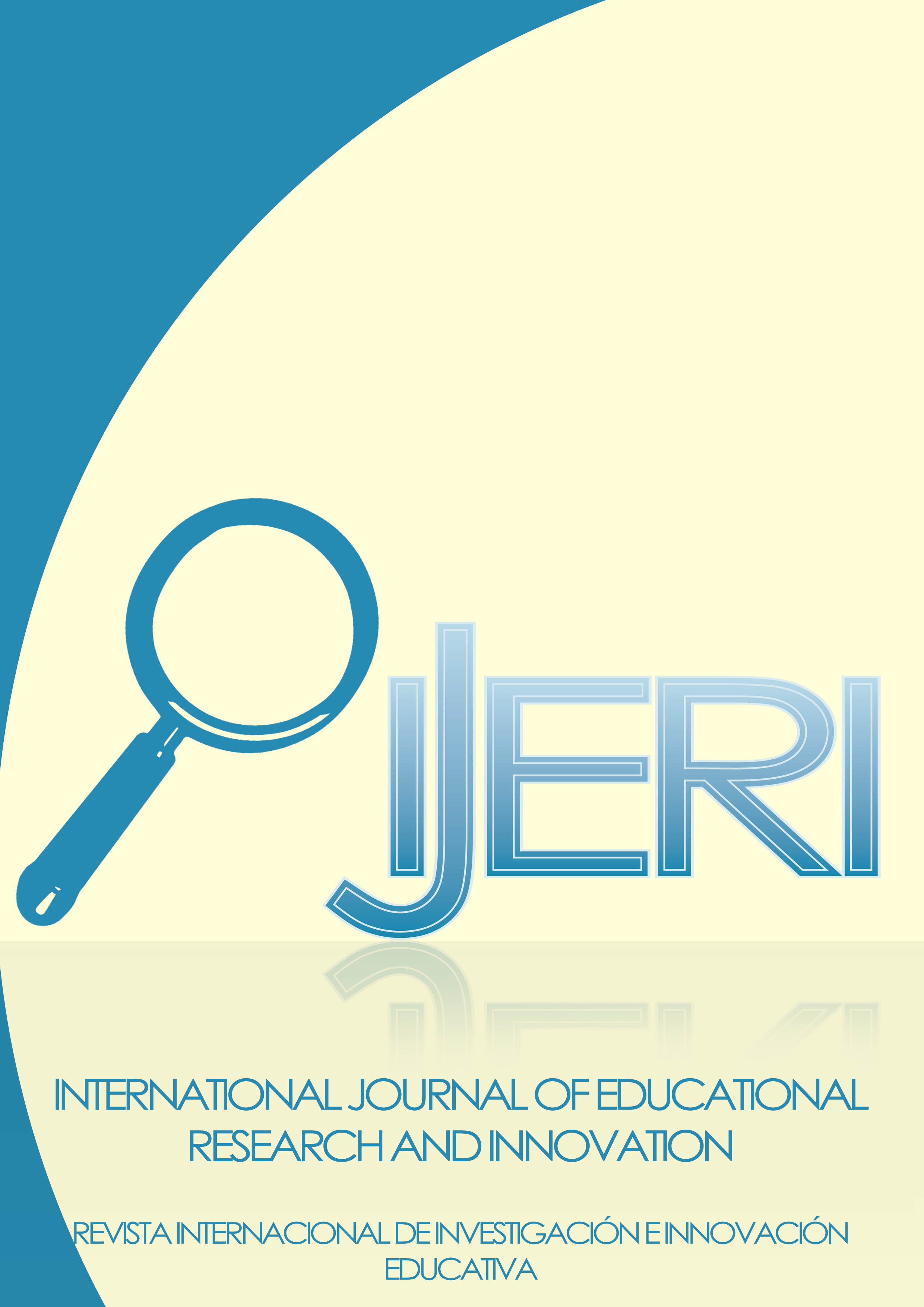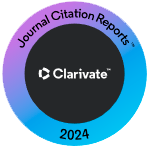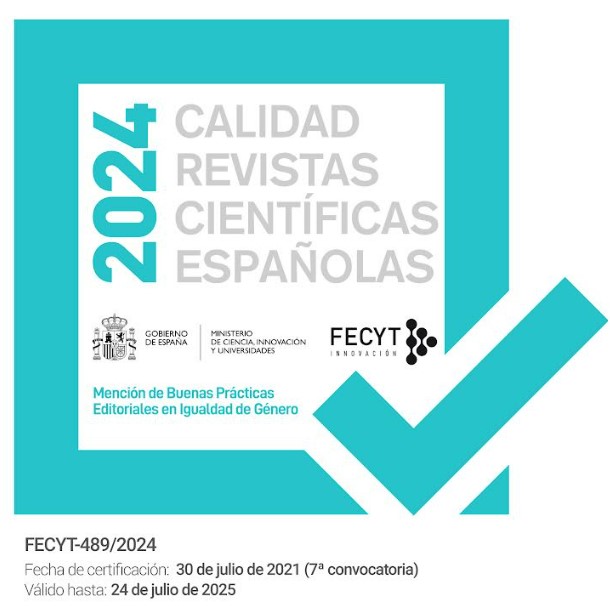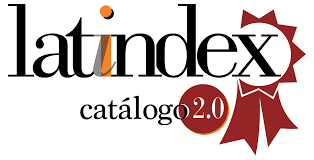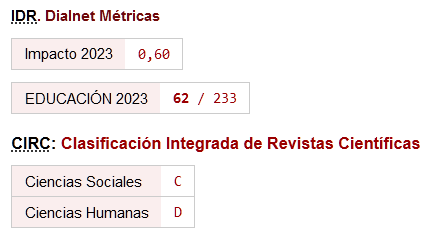Technology Innovation in STEM Education
A Review and Analysis
DOI:
https://doi.org/10.46661/ijeri.7883Keywords:
STEM Education, Learning, Teaching, Technology Innovation, SLRAbstract
The study examines research articles on STEM education and its technology innovation that have been indexed by the Scopus, Web of Science (WoS) databases, Springer, and Google, and aims to provide an in-depth analysis of the high-impact empirical studies in STEM education. The authors' conclusions are consistent with past studies on the topic, highlighting the increasing need for technology-based occupations as robots replace humans in industry and society. The study highlights several issues in the field of STEM education, including the gender divide and the effects of STEM education on people of all ethnicities. The authors provide an in-depth investigation of high-impact empirical studies in STEM education to understand the progress of research paradigms in the subject. The study offers an up-to-date view of the highly cited empirical research articles in STEM education and technology, serving as a solid foundation for future studies. It is recommended that future research continues to emphasize creativity, particularly in the field of science, in both research and education. The authors stress the importance of addressing the issues of the gender divide and the effects of STEM education on people of all ethnicities in future research.
Downloads
References
Abichandani, P., & Sivakumar, V. (2022). Internet-of-Things Curriculum , Pedagogy , and Assessment for STEM Education : A Review of Literature. IEEE Access, 10, 38351–38369. https://doi.org/10.1109/ACCESS.2022.3164709
Achilleos, A. P., Mettouris, C., Yeratziotis, A., Papadopoulos, G. A., Member, S., Pllana, S., Member, S., Huber, F., Bernhard, J., & Leitner, P. (2019). SciChallenge : A Social Media Aware Platform for Contest-Based STEM Education and Motivation of Young Students. IEEE Transactions on Education, 12(1), 98–111. https://doi.org/10.1109/TLT.2018.2810879
Adams, R., Evangelou, D., English, L., De Figueiredo, A. D., Mousoulides, N., Pawley, A. L., Schiefellite, C., Stevens, R., Svinicki, M., Trenor, J. M., & Wilson, D. M. (2011). Multiple Perspectives on Engaging Future Engineers. Journal of Engineering Education, 100(1), 48–88. https://doi.org/10.1002/j.2168-9830.2011.tb00004.x
Al-Azawi, R., Albadi, A., Moghaddas, R., & Westlake, J. (2019). Exploring the Potential of Using Augmented Reality and Virtual Reality for STEM Education. In L. Uden, D. Liberona, G. Sanchez, & S. Rodríguez-González (Eds.), Learning Technology for Education Challenges (pp. 36–44). Springer International Publishing. https://doi.org/10.1007/978-3-030-20798-4_4
Anderson, J., & Li, Y. (2020). Integrated Approached to STEM Education: An International Perspective. In Education for the Twenty-First Century. https://doi.org/10.1007/978-3-030-52229-2
Anito, J., & Morales, M. P. E. (2019). The Pedagogical Model of Philippine STEAM Education: Drawing Implications for the Reengineering of Philippine STEAM Learning Ecosystem. Universal Journal of Educational Research, 7(12), 2662–2669. https://eric.ed.gov/?id=ED605780. https://doi.org/10.13189/ujer.2019.071213
Appel, D. C., & Mansouri, M. (2022). System Dynamics Modeling of the STEM Education and Outreach Career Pipeline. IEEE Transaction OnTechnology and Society, 3(2), 143–153. https://doi.org/10.1109/TTS.2022.3162318
Baharin, N., Kamarudin, N., & Manaf, U. K. A. (2018). Integrating STEM Education Approach in Enhancing Higher Order Thinking Skills. International Journal of Academic Research in Business and Social Sciences, 8(7), 810–821. https://doi.org/10.6007/ijarbss/v8-i7/4421
Baran, E., Bilici, S. C., Mesutoglu, C., & Ocak, C. (2016). Moving STEM Beyond Schools: Students’ Perceptions About an Out-of-School STEM Education Program. International Journal of Education in Mathematics, Science and Technology, 4(1), 9–19. https://www.ijemst.org/index.php/ijemst/article/view/74. https://doi.org/10.18404/ijemst.71338
Barclay, T., & Bentley, B. (2021). Stem Education: How much Integration is Enough? International Journal of Research Publications, 89(1), 183–199. https://doi.org/10.47119/ijrp1008911120212460
Bevan, B., Gutwill, J. P., Petrich, M., & Wilkinson, K. (2015). Learning Through STEM-Rich Tinkering: Findings From a Jointly Negotiated Research Project Taken Up in Practice. Science Education, 99(1), 98–120. https://doi.org/https://doi.org/10.1002/sce.21151
Bevan, Browwyn. (2017). The promise and the promises of Making in science education. Studies in Science Education, 53(1), 75–103. https://doi.org/10.1080/03057267.2016.1275380
Boy, G. A. (2013). From STEM to STEAM: Toward a Human-Centred Education, Creativity & Learning Thinking. Proceedings of the 31st European Conference on Cognitive Ergonomics. https://doi.org/10.1145/2501907.2501934
Bridle, H., Vrieling, A., Cardillo, M., Araya, Y., & Hinojosa, L. (2013). Preparing for an interdisciplinary future: A perspective from early-career researchers. Futures, 53, 22–32. https://doi.org/https://doi.org/10.1016/j.futures.2013.09.003
Bryan, L. A., Moore, T. J., Johnson, C. C., & Roehrig, G. H. (2015). Integrated stem education. STEM Road Map: A Framework for Integrated STEM Education. In STEM Road Map. rTaylor and Francis Inc. https://experts.umn.edu/en/publications/integrated-stem-education. https://doi.org/10.4324/9781315753157-3
Charlton, P., & Avramides, K. (2016). Knowledge Construction in Computer Science and Engineering when Learning Through Making. IEEE Transactions on Education, 9(4), 379–390. https://doi.org/10.1109/TLT.2016.2627567
Comin, D., & Mestieri, M. (2018). If Technology Has Arrived Everywhere, Why Has Income Diverged? American Economic Journal: Macroeconomics, 10(3), 137–178. https://econpapers.repec.org/RePEc:aea:aejmac:v:10:y:2018:i:3:p:137-78. https://doi.org/10.1257/mac.20150175
Concepción, J. D., López Meneses, E., Vázquez Cano, E., & Crespo-Ramos, S. (2022). Implication of previous training and personal and academic habits of use of the Internet in the development of different blocks of basic digital 2.0 competencies in university students. IJERI: International Journal of Educational Research and Innovation, 18 SE-, 18–46. https://doi.org/10.46661/ijeri.6337
Conradty, C., Bogner, F. X., Conradty, C., & Bogner, F. X. (2018). From STEM to STEAM : How to Monitor Creativity From STEM to STEAM : How to Monitor Creativity. Creativity Research Journal, 30(3), 233–240. https://doi.org/10.1080/10400419.2018.1488195
Cook, M., Lischer-Katz, Z., Hall, N., Hardesty, J., Johnson, J., McDonald, R., & Carlisle, T. (2019). Challenges and strategies for educational virtual reality: Results of an expert-led forum on 3D/VR technologies across academic institutions. Information Technology and Libraries, 38(4), 25–48. https://doi.org/10.6017/ital.v38i4.11075
Corlu, M. S., Capraro, R. M., & Capraro, M. M. (2014). Introducing STEM education: implications for educating our teachers in the age of innovation. In Eğitim ve Bilim (Vol. 39, Issue 171).
DeJarnette, N. (2012). America’s Children: Providing Early Exposure to STEM (Science, Technology, Engineering and Math) Initiatives. Education, 133(1), 77–84. www.ingentaconnect.com/content/prin/ed/2012/00000133/00000001/art00008
Donnermann, M., Schaper, P., & Lugrin, B. (2022). Social Robots in Applied Settings: A Long-Term Study on Adaptive Robotic Tutors in Higher Education. Frontiers in Robotics and AI, 9. https://doi.org/10.3389/frobt.2022.831633
Dori, Y. J. (2022). FIRST High-School Students and FIRST Graduates : STEM Exposure and Career Choices. IEEE Transactions on Education, 65(2), 167–176. https://doi.org/10.1109/TE.2021.3104268
Gonzalez, H. B., & Kuenzi, J. J. (2012). Science, technology, engineering, and mathematics (STEM) education: A primer. In Congressional Research Service. https://digital.library.unt.edu/ark:/67531/metadc122233
Goodwin, M., Healy, J., Jacksa, K., & Whitehair, J. (2017). Strategies to address major obstacles to STEM-based Education. ISEC 2017 - Proceedings of the 7th IEEE Integrated STEM Education Conference, c, 156–158. https://doi.org/10.1109/ISECon.2017.7910233
Guzey, S. S., Moore, T. J., & Harwell, M. (2016). Building Up STEM: An Analysis of Teacher-Developed Engineering Design-Based STEM Integration Curricular Materials. Journal of Pre-College Engineering Education Research (J-PEER), 6(1), 2. https://doi.org/10.7771/2157-9288.1129
Halimatou, S. M., & Yang, X. (2014). The Adoption of Instructional Techniques and Educational Technologies among Teaching. Creative Education, 1(December), 2062–2070. https://doi.org/doi.org/10.4236/ce.2014.524230
Han, S., Capraro, R., & Capraro, M. M. (2015). How science, technology, engineering, and mathematics (STEM) project-based learning (PBL) affects high, middle, and low achievers differently : The impact of students factor on achievement. International Journal of Science and Mathematics Education, 13(5), 1089–1113. https://doi.org/10.1007/s10763-014-9526-0
Henriksen, D. (2014). Full STEAM Ahead: Creativity in Excellent STEM Teaching Practices. The Steam Journal, 1(2), 1–9. https://doi.org/10.5642/steam.20140102.15
Honey, M., Pearson, G., & Schweingruber, H. (2014). STEM Integration in K-12 Education: Status, Prospects, and an Agenda for Research. https://doi.org/10.17226/18612
Hsieh, T. S., Kim, J. B., Wang, R. R., & Wang, Z. (2018). Do STEM-educated boards contribute to innovation activities in large companies? IEEE Engineering Management Review, 46(4), 32–35. https://doi.org/10.1109/EMR.2018.2883731
Huang, Z., Kougianos, E., Member, S., Ge, X., Wang, S., Member, S., Chen, P. D., & Cai, L. (2021). A Systematic Interdisciplinary Engineering and Technology Model Using Cutting-Edge Technologies for STEM Education. IEEE Transactions on Education, 64(4), 390–397. https://doi.org/10.1109/TE.2021.3062153
Hughes, C. E., Dieker, L. A., Glavey, E. M., Hines, R. A., Wilkins, I., Ingraham, K., Bukaty, C. A., Ali, K., Shah, S., Murphy, J., & Taylor, M. S. (2022). RAISE : Robotics & AI to improve STEM and social skills for elementary school students. Frontiers in Virtual Reality, 1(October), 1–19. https://doi.org/10.3389/frvir.2022.968312
Iolanda, A., Cautisanu, C., Gr, C., Chris, T., Herminio, G., & Marcondes, S. (2022). Exploring Digital Literacy Skills in Social Sciences and Humanities Students. Sustainability, 14(1), 1–31. https://doi.org/doi.org/10.3390/su14052483
Jho, H., Hong, O., & Song, J. (2016). An Analysis of STEM/STEAM Teacher Education in Korea with a Case Study of Two Schools from a Community of Practice Perspective. Eurasia Journal of Mathematics, Science and Technology Education, 12(7), 1843–1862. https://doi.org/10.12973/eurasia.2016.1538a
Kandlhofer, M., Steinbauer, G., Hirschmugl-Gaisch, S., & Huber, P. (2016). Artificial intelligence and computer science in education: From kindergarten to university. 2016 IEEE Frontiers in Education Conference (FIE), 1–9. https://doi.org/10.1109/FIE.2016.7757570
Kelley, T. R., & Knowles, J. G. (2016). A conceptual framework for integrated STEM education. International Journal of STEM Education, 3(1), 11. https://doi.org/10.1186/s40594-016-0046-z
Lehman, K. J., Sax, L. J., & Zimmerman, H. B. (2016). Women planning to major in computer science: Who are they and what makes them unique? Computer Science Education, 26(4), 277–298. https://doi.org/10.1080/08993408.2016.1271536
Maass, K., Geiger, V., Ariza, M. R., & Goos, M. (2019). The Role of Mathematics in interdisciplinary STEM education. ZDM ZDM Mathematics Education, 51(6), 869–884. https://doi.org/10.1007/s11858-019-01100-5
Maphosa, M., Doorsamy, W., & Paul, B. S. (2022). Factors Influencing Students ’ Choice of and Success in STEM : A Bibliometric Analysis and Topic Modeling Approach. IEEE Transactions on Education, 65(4), 657–669. https://doi.org/10.1109/TE.2022.3160935
Marrero, M. E., Gunning, A. M., & Germain-williams, T. (2014). What is STEM Education ? Global Education Review, 1, 1–6. https://ger.mercy.edu/index.php/ger/article/view/135/91
McClure, E. R., Guernsey, L., Clements, D. H., Bales, S. N., Nichols, J., N., K.-T., & Levine, M. H. (2017). STEM Starts Early: Grounding Science, Technology, Engineering, and Math Education in Early Childhood. ERIC, 68.
Menjívar Valencia, E., Sánchez Rivas, E., Ruiz Palmero, J., & Guillén Gámez, F. D. (2022). Perceptions of university students about virtual reality as a didactic resource: a pre-experimental study with a control and experimental group. IJERI: InternationalJournal of Educational Research and Innovation, 17 SE-, 152–171. https://doi.org/10.46661/ijeri.5904
Micó-Amigo, E., & Bernal Bravo, C. (2020). Evaluative research on teaching innovation with simulators in the area of Technology in Compulsory Secondary Education. IJERI: International Journal of Educational Research and Innovation, 14 SE-, 134–146. https://doi.org/10.46661/ijeri.4855
Mishra, P., & Koehler, M. J. (2006). Technological Pedagogical Content Knowledge: A Framework for Teacher Knowledge. Teachers College Record, 108, 1017–1054. https://doi.org/10.1111/j.1467-9620.2006.00684.x
Moore, T. J., Stohlmann, M. S., Wang, H.-H., Tank, K. M., Glancy, A. W., & Roehrig, G. H. (2014). Implementation and integration of engineering in K-12 STEM education. In M. C. S. Purzer, J. Strobel (Ed.), Engineering in Pre-College Settings: Research into Practice. Purdue University Press. https://doi.org/10.2307/j.ctt6wq7bh.7
Nathan, M. J., Atwood, A. K., & Prevost, A. (2011). How Professional Development in Project Lead the Way Changes High School STEM Teachers ’ Beliefs about Engineering Education. Journal of Pre-College Engineering Education Research, 1(1), 1–15. https://doi.org/10.7771/2157-9288.1027
Ng, S. B. (2019). Exploring STEM competences for the 21st century. In-Progress Reflection, 30, 1–53. https://unesdoc.unesco.org/ark:/48223/pf0000368485
Park, H., Byun, S.-Y., Sim, J., H., & Baek, Y. S. (2016). Teachers’ Perceptions and Practices of STEAM Education in South Korea. Eurasia Journal of Mathematics, Science and Technology Education, 12(7), 1739-1753. https://doi.org/10.12973/eurasia.2016.1531a
Pellas, N., Dengel, A., & Christopoulos, A. (2020). A Scoping Review of Immersive Virtual Reality in STEM Education. IEEE Transactions on Learning Technologies, 13(4), 748–761. https://doi.org/10.1109/TLT.2020.3019405
Pimthong, P., & Williams, J. (2018). Preservice teachers’ understanding of STEM education. Kasetsart Journal of Social Sciences, 1(1), 1–7. https://doi.org/10.1016/j.kjss.2018.07.017
Ring, E. A., Dare, E. A., Crotty, E. A., & Roehrig, G. H. (2017). The Evolution of Teacher Conceptions of STEM Education Throughout an Intensive Professional Development Experience. Journal of Science Teacher Education, 28(5), 444–467. https://doi.org/10.1080/1046560X.2017.1356671
Roopaei, M., & Klaas, E. (2021). Immersive Technology in Integrating STEM Education. IEEE Integrated STEM Education Conference, 159–164. https://doi.org/10.1109/ISEC52395.2021.9764112
Scalise, K., Timms, M., Moorjani, A., Clark, L., Holtermann, K., & Irvin, P. S. (2011). Student learning in science simulations: Design features that promote learning gains. Journal of Research in Science Teaching, 48(9), 1050–1078. https://doi.org/https://doi.org/10.1002/tea.20437
Singkorn, S. (2022). Development of Innovation-Based Learning and Teaching Model for Technology Education in Thailand 4 . 0 Era. 6–9. https://doi.org/10.1109/iSTEM-Ed55321.2022.9920794
Stains, M., Harshman, J., Barker, M. K., Chasteen, S. V, Cole, R., DeChenne-Peters, S. E., Eagan, M. K., Esson, J. M., Knight, J. K., Laski, F. A., Levis-Fitzgerald, M., Lee, C. J., Lo, S. M., McDonnell, L. M., McKay, T. A., Michelotti, N., Musgrove, A., Palmer, M. S., Plank, K. M., … Young, A. M. (2018). Anatomy of STEM teaching in North American universities. Science, 359(6383), 1468–1470. https://doi.org/10.1126/science.aap8892
Stohlmann, M., Moore, T. J., & Roehrig, G. H. (2012). Considerations for Teaching Integrated STEM Education. Ournal of Pre-College Engineering Education Research, 2(1), 4. https://doi.org/10.5703/1288284314653
Surpare, K. (2022). Development Innovation-based Learning Model to Study the Creation of Teaching Media for Students of Technical Education Program. 31–34.
Takeuchi, M. A., Sengupta, P., Shanahan, M.-C., Adams, J. D., & Hachem, M. (2020). Transdisciplinarity in STEM education: a critical review. Studies in Science Education, 56(2), 213–253. https://doi.org/10.1080/03057267.2020.1755802
Thibaut, L., Ceuppens, S., De Loof, H., De Meester, J., Goovaerts, L., Struyf, A., & Depaepe, F. (2018). Integrated STEM Education: A Systematic Review of Instructional Practices in Secondary Education. European Journal of STEM Education, 3(1), 1–12. https://doi.org/10.20897/ejsteme/85525
Tytler, R., Symington, D., & Smith, C. (2011). A Curriculum Innovation Framework for Science, Technology and Mathematics Education. Research in Science Education, 41(1), 19–38. https://doi.org/10.1007/s11165-009-9144-y
Usman, M. (2017). Does University-Industry Collaboration Matter for Innovation? IJERI: International Journal of Educational Research and Innovation, 8, 1–23. https://www.upo.es/revistas/index.php/IJERI/article/view/2597
Villanueva, M. G., Taylor, J., Therrien, W., & Hand, B. (2012). Science education for students with special needs. Studies in Science Education, 48(2), 187–215. https://doi.org/10.1080/14703297.2012.737117
Vincent-Lancrin, K. K. and S. (2013). Sparking Innovation in STEM Education with Technology and Collaboration. In Centre For Educational Research and Innovation (Vol. 1, Issue 1). http://www.oecd-ilibrary.org/education/sparking-innovation-in-stem-education-with-technology-and-collaboration_5k480sj9k442-en%5Cnpapers3://publication/doi/10.1787/5k480sj9k442-en
Williams, P. J. (2016). Research in technology education: looking back to move forward … again. International Journal of Technology and Design Education, 26(2), 149–157. https://doi.org/10.1007/s10798-015-9316-1
Wu, Y., & Anderson, O. R. (2015). Technology-enhanced stem (science, technology, engineering, and mathematics) education. Journal of Computers in Education, 2(3), 245–249. https://doi.org/10.1007/s40692-015-0041-2
Zhao, D., Muntean, C. H., Chis, A. E., & Rozinaj, G. (2022). Game-Based Learning : Enhancing Student Experience , Knowledge Gain , and Usability in Higher Education Programming Courses. IEEE Transactions on Education, 65(4), 502–513. https://doi.org/10.1109/TE.2021.3136914
Zhao, D., Playfoot, J., Nicola, C., & Guarino, G. (2022). An Innovative Multi-Layer Gamification Framework for Improved STEM Learning Experience. IEEE Access, 10, 3879–3889. https://doi.org/10.1109/ACCESS.2021.3139729
Zintgraff, C., Suh, S., Kellison, B., & Resta, P. E. (2020). STEM in the Technopolis: The Power of STEM Education in Regional Technology Policy. In STEM in the Technopolis: The Power of STEM Education in Regional Technology Policy. https://doi.org/10.1007/978-3-030-39851-4
Zollman, A. (2012). Learning for STEM Literacy: STEM Literacy for Learning. School Science and Mathematics, 112(1), 12–19. https://doi.org/https://doi.org/10.1111/j.1949-8594.2012.00101.x
Published
How to Cite
Issue
Section
License
Copyright (c) 2023 Amir Khushk, Liu Zhiying , Xu Yi, Zhang Zengtian

This work is licensed under a Creative Commons Attribution-NonCommercial-NoDerivatives 4.0 International License.

